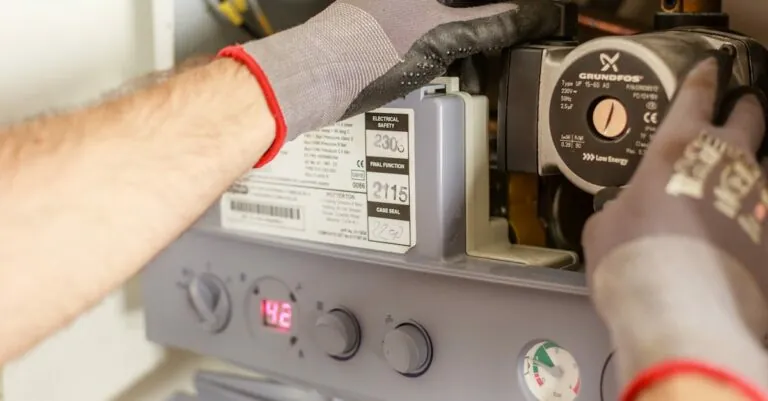Power sanding tools are the unsung heroes of the DIY world, transforming rough surfaces into smooth masterpieces faster than you can say “sawdust.” They take the grunt work out of sanding, letting anyone channel their inner craftsman without breaking a sweat—or a nail. Whether you’re a weekend warrior or a seasoned pro, these tools can save you time and energy while delivering a finish that even your picky neighbor will envy.
Imagine tackling that old, weather-beaten table or those stubborn cabinets with the finesse of a magician. Power sanders make it possible, turning tedious tasks into a breeze. With a variety of options available, from orbital sanders to belt sanders, there’s a perfect tool for every project. So grab your safety goggles and get ready to unleash your creativity—because with power sanding tools in hand, the only limit is your imagination (and maybe your budget).
Table of Contents
ToggleOverview of Power Sanding Tools
Power sanding tools play a crucial role in woodworking and finishing projects. They provide efficiency, enhancing the quality of results achieved on diverse materials. Orbital sanders excel at removing surface imperfections on flat and curved surfaces, making them ideal for finishing tasks. Belt sanders tackle larger areas quickly by removing substantial material, which is beneficial for initial sanding stages.
These tools come in various sizes and power levels to meet different project requirements. Users often choose the size of the tool based on the project’s scope. For intricate tasks, detail sanders provide precision in tight spaces. Random orbital sanders combine the circular and orbital motion, reducing swirl marks and creating smooth finishes.
Many options on the market feature variable speeds for better control. Selecting the right grit sandpaper also influences the outcome, with finer grits providing a smoother finish than coarser ones. Safety remains essential when using power sanding tools; wearing protective eyewear and masks prevents dust inhalation and shield the eyes from debris.
Electric sanders require minimal maintenance, often just cleaning dust from their exterior and changing sandpaper as necessary. For added convenience, some models include dust collection systems, minimizing cleanup time. Selecting the right power sanding tool ensures effective results, allowing users to achieve their desired finish effortlessly. By understanding the capabilities of each type, users maximize the performance of their sanding tools.
Types of Power Sanding Tools

Power sanding tools come in various types, each designed for specific tasks in woodworking and finishing projects. Understanding these tools helps users select the right one for their projects.
Belt Sanders
Belt sanders excel in removing material quickly, making them ideal for large surfaces. Powered by an electric motor, they utilize a continuous loop of sandpaper. These sanders work effectively on rough wood, leveling surfaces before finer sanding. They are best suited for straight edges, as their design limits control on curves. When adjusting the grit, coarse belts handle heavy material removal, while finer grits achieve a smoother finish.
Orbital Sanders
Orbital sanders feature a circular sanding pad that moves in an orbital pattern, making them versatile for various surfaces. These tools apply random motion to reduce swirl marks, ensuring a smooth and even surface. Users appreciate their ability to work on both flat and contoured areas. With various speeds available, they enable the right settings for different materials. The compact design allows for easy handling, especially in tight spaces.
Random Orbital Sanders
Random orbital sanders combine the features of orbital and rotary sanders, offering efficient material removal and a clean finish. Their distinctive movement helps prevent sanding marks, making them popular among woodworkers. Various speed settings provide flexibility for different tasks and material types. Users can easily switch sandpaper grits based on project requirements. The dust collection system, often integrated into these tools, keeps work areas clean and minimizes airborne particles.
Detail Sanders
Detail sanders are designed for intricate sanding tasks in tight spaces where larger tools are ineffective. These tools feature small, triangular pads for precision work, making them perfect for corners and detailed moldings. Lightweight and easy to maneuver, they allow users to achieve a smooth finish in hard-to-reach areas. Variable speed settings contribute to control over the sanding process, providing versatility for various materials. Detail sanders are an essential addition for projects requiring finesse and attention to detail.
Key Features to Consider
Selecting the right power sanding tool involves looking at several important features that influence performance and user experience.
Power and Speed
Power defines the efficiency of a sander. Higher wattage typically provides faster material removal. Variable speed settings enhance control, allowing users to adjust based on project requirements. Sanding delicate surfaces benefits from lower speeds, while heavy material removal effectively uses higher speeds. Each power setting serves different needs, making this feature crucial.
Portability
Portability enhances user convenience. Lightweight models are easy to maneuver, making them suitable for various project locations. Cordless options offer freedom, especially on large job sites. Compact designs simplify storage, while carrying handles improve transportability. Considering weight and battery life becomes essential for those who frequently move between jobs.
Dust Collection Systems
Effective dust collection systems minimize mess and improve visibility during sanding. Integrated dust bags capture debris, keeping the workspace cleaner. Some models include vacuum attachments for more efficient dust removal. Maintaining a clean work area not only enhances safety but also promotes a better finish. Evaluating how dust collection works in each tool helps ensure a more enjoyable sanding experience.
Ergonomics and Design
Comfortable design influences prolonged use. Tools with soft grips reduce hand fatigue, enabling longer sanding sessions. Lightweight designs enhance ease of use, especially for overhead tasks. Balanced weight distribution prevents strain during operation. Considering ergonomics leads to a more user-friendly experience, improving overall project outcomes.
Popular Brands and Models
Several brands dominate the power sanding tools market, each offering unique features and reliable performance.
DeWalt provides a range of power sanders known for their durability and efficiency. Their DWE6423K orbital sander stands out with its variable speed control, making it suitable for diverse projects.
Bosch is another reputable brand, presenting models like the GSS20-40 detail sander. This tool excels in precision work, enabling users to reach tight spaces with ease.
When considering Makita, their BO5041K random orbital sander garners attention for its ergonomic design and powerful motor. The tool’s soft grip enhances user comfort during extended use.
Black+Decker offers affordable options, including the BDERO100 orbital sander. This model combines functionality and straightforward operation, perfect for novice DIYers.
Ryobi’s collection features the P411 cordless sander, allowing for greater mobility without the hassle of cords. The lightweight design enhances maneuverability on intricate projects.
Festool specializes in professional-grade tools, with the ETS 125 random orbital sander noted for its exceptional finish quality. This model is designed for users seeking a top-tier sanding experience.
Overall, these brands and models reflect the diversity in available power sanding tools, catering to different skill levels and project needs. Each offers distinctive features, ensuring every user finds a suitable option for their sanding tasks.
Power sanding tools are essential for anyone looking to achieve smooth finishes on various surfaces. Their efficiency and versatility make them invaluable in both DIY projects and professional settings. With options like belt sanders for heavy material removal and detail sanders for intricate work, users can choose the right tool for their specific needs.
By considering features such as power, speed, and ergonomics, users can enhance their sanding experience and achieve impressive results. Prioritizing safety and maintenance ensures a smooth workflow and prolonged tool life. Embracing these tools opens up a world of creative possibilities, empowering users to take on any sanding challenge with confidence.





